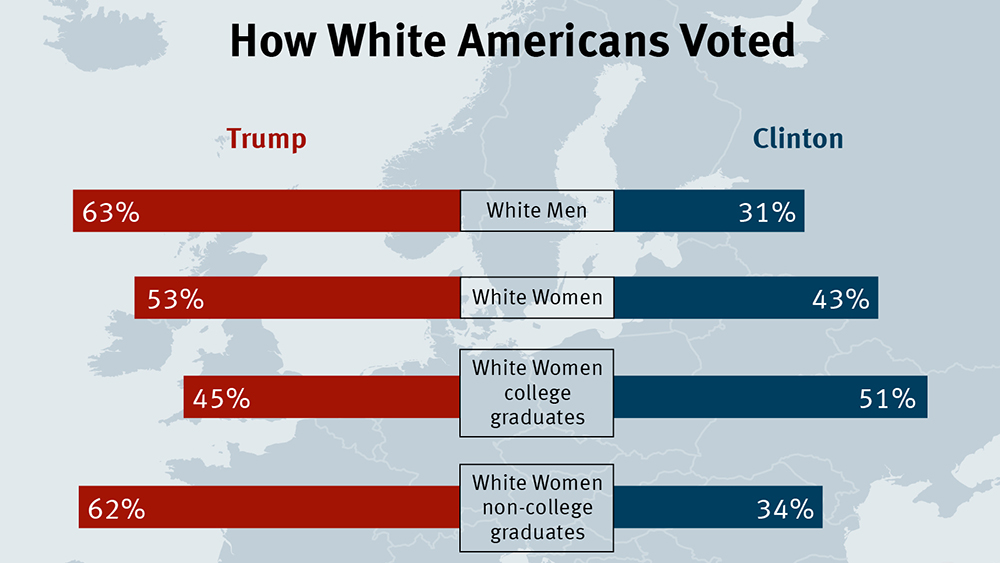Back in October – another geological era in American politics – FiveThirtyEight, a polling aggregator headed by Nate Silver, published a breakdown of the presidential race by gender. The conventional wisdom then was that if only women voters decided the presidency, Hillary Clinton would cruise to victory with a margin of 33 percent. According to one poll, it would have been the most decisive win since the widespread adoption of the popular vote in 1824, and would grant her 458 of 538 electoral votes. Meanwhile, if the election were decided entirely by men, Donald Trump would have claimed an 11 percent margin of victory, and 350 electoral votes. To paraphrase the president-elect himself, when American men choose their leaders, they’re not choosing their best.
That is not, however, how the election played out. Women did prefer Clinton, but by a narrower margin than expected: FiveThirtyEight reported a difference of 12 percentage points. And white women actually chose Trump – he received 53 percent of the white female vote overall, and 62 percent of the vote from white women who were not college graduates.
In fact, the election appeared to be a referendum on gender equality – pitting the first female candidate from a major party against a man who seemed to revel in degrading women – but the real deciding factors seem to have been race and age.
According to the Washington Post, Trump took 58 percent of the white vote overall, while losing the Black, Latino, and Asian votes by margins ranging from 36 to 80 percentage points. And while Americans 44 years old and younger voted more for Clinton, Trump was the favorite among older Americans.
The latter trend is something we’ve seen elsewhere. When Britain voted to leave the European Union, age was the key fault line: while three in four Britons between 18 and 24 voted to remain, along with half of voters between 25 and 49, the day was carried by voters over 50, a strong majority of whom voted to leave.
Level of education, meanwhile, unites Trump voters with supporters of France’s Front National. According to the same Post analysis, Trump won narrow majorities among people who had not completed university. A slim plurality of voters with college degrees picked Clinton, and voters with graduate degrees picked her almost two to one. In France, 36 percent of voters with a high school education – and 45 percent without – voted for Front National in 2015, compared to only 19 percent with some college education and 15 percent with more.
And a final point unites all three: Trump, Brexit, and Front National are all, in a sense, rural uprisings against the cities. According to the Post, Trump won voters in small cities and rural areas 62 to 34 percent. He eked out a narrow win in the suburbs, but lost urban voters (defined as people living in cities with 50,000 people or more) 59 to 35 percent. In Britain, meanwhile, the Remain camp was strongest in London and the other major cities (along with Scotland), while the countryside tended to vote to leave the EU. And in France, as of 2015 support for Front National was twice as high in towns with under 2000 people (30 percent) as it was in the Paris region (16 percent).
In each of these cases, gender has actually played a smaller role than one might expect. In the case of Brexit, men and women voted almost identically; in the case of Front National, there was a small gap between the two in 2015, with 33 percent of men and 26 percent of women supporting the party, and that gap has grown: in 2012, the difference was 1.5 percentage points.
This doesn’t mean that women don’t have a distinct set of interests that these movements often fail to address. However, their central appeal is always their claim to defend a vanishing culture, whether they’re promising to eject immigrants from France, save England from Europe, or make America great again. And when it comes to culture, to paraphrase a number of post-mortem analyses of the American results, white women are white before they’re women.







